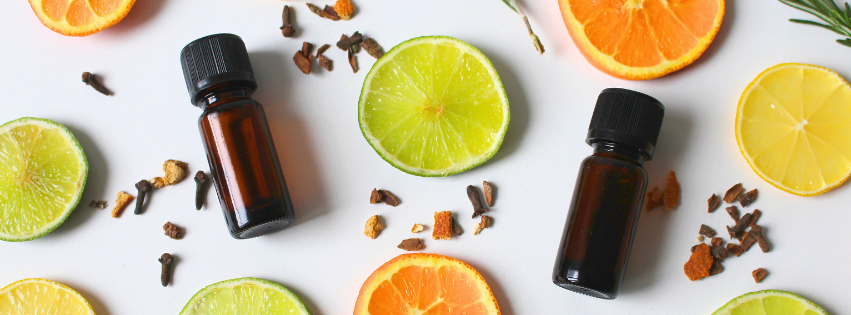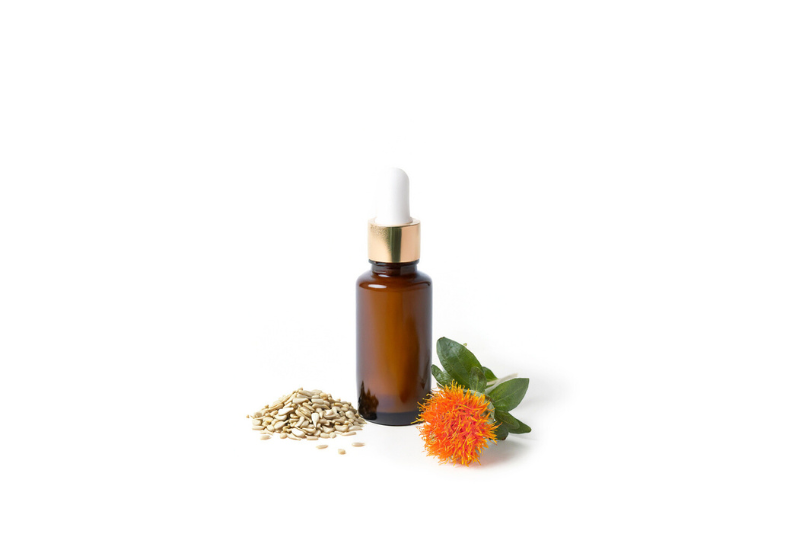Essential oils have become indispensable in a wide array of industries, from cosmetics and personal care to food and wellness products. Their natural origin, aromatic complexity, and versatile properties make them a favorite among formulators and consumers alike.
However, choosing the right essential oils for your products is far from straightforward. It requires a nuanced understanding of quality, purity, sourcing, regulatory compliance, and sustainability.
At SanaBio GmbH, we are passionate about providing high-quality, certified organic essential oils that meet the strictest standards of safety and traceability. In this comprehensive guide, we will walk you through the critical considerations for selecting the right essential oils for your products — whether you are developing a new skincare line, launching an aromatherapy blend, or enhancing a food product. Our approach is rooted in transparency, scientific rigor, and a deep respect for nature.
Understanding Essential Oils: Nature’s Complex Mixtures
Essential oils are concentrated, volatile extracts obtained from various parts of plants—flowers, leaves, bark, seeds, or roots. Each oil contains a unique blend of aromatic compounds, which give it its characteristic scent and functional properties. The complexity of these mixtures is what makes essential oils both powerful and challenging to work with.
Key Extraction Methods
-
Steam Distillation: The most common method, used for lavender, peppermint, and many other oils. It preserves delicate aromatic compounds.
-
Cold Pressing: Used mainly for citrus oils, this method extracts oil from the rind without heat, maintaining freshness.
-
CO₂ Extraction: A modern technique that uses pressurized carbon dioxide to extract oils at low temperatures, yielding highly pure extracts.
-
Solvent Extraction: Employed for delicate flowers like jasmine, but may leave trace solvents and is less preferred for food or therapeutic use.
The extraction method influences the oil’s chemical profile, aroma, and suitability for different applications.
Quality and Purity: The Cornerstones of Safe and Effective Products

Why Quality Matters
The quality of essential oils directly impacts the safety, efficacy, and sensory experience of your products. Low-quality or adulterated oils can compromise product performance, introduce allergens or contaminants, and damage your brand’s reputation.
How to Assess Quality
1. Certification and Documentation
-
Organic Certification: Look for oils certified by reputable bodies such as EU Organic, AB, COSMOS, or Nature & Progrès. These certifications guarantee that the oils are produced without synthetic pesticides, fertilizers, or GMOs, and that every step of the process is documented and traceable.
-
Batch-Specific Analysis: Reputable suppliers provide a Certificate of Analysis (CoA) for each batch, detailing organoleptic (sensory), physico-chemical, and chromatographic (GC-MS) data. This ensures consistency and transparency.
2. Purity and Authenticity
-
Single-Origin and Traceability: Oils sourced from a single origin or region often have a more consistent and authentic profile. Traceability from field to bottle is critical for quality assurance.
-
No Adulteration: Pure essential oils should not be diluted with carrier oils, synthetic fragrances, or other additives unless specifically labeled as such.
3. Sensory Evaluation
-
Aroma: A high-quality essential oil has a fresh, vibrant aroma that reflects its botanical origin.
-
Color and Clarity: While color can vary naturally, the oil should be free from cloudiness or sediment (unless it is a cold-pressed citrus oil, which may contain natural waxes).
Regulatory and Safety Considerations

Navigating Regulations
The intended use of essential oils — cosmetic, food, or aromatherapy — determines the applicable regulations. It is essential to ensure that your products comply with local and international laws.
1. Cosmetic Use
-
INCI Naming: Essential oils must be labeled with their International Nomenclature of Cosmetic Ingredients (INCI) name.
-
Allergens: Certain components (e.g., limonene, linalool) are regulated as potential allergens and must be declared on product labels if present above specific thresholds.
-
Usage Limits: Some essential oils have maximum allowable concentrations in cosmetics due to sensitization or phototoxicity risks.
2. Food Use
-
Food Grade Certification: Only use essential oils that are certified as food grade and comply with EU Regulation (EC) No 1334/2008 on flavorings.
-
No Health Claims: Avoid making health or therapeutic claims about essential oils in food products unless supported by robust scientific evidence and approved by regulatory authorities.
3. Aromatherapy and Wellness
-
Safety Precautions: Essential oils for aromatherapy should be pure, unadulterated, and accompanied by safety information regarding dilution, application, and contraindications.
Avoiding Health Claims
It is important, both ethically and legally, to avoid making unsubstantiated health promises regarding essential oils. Focus on their sensory, aromatic, or cosmetic benefits rather than therapeutic effects unless you have regulatory approval.
Sourcing and Sustainability: The Ethical Dimension

Why Sustainable Sourcing Matters
The growing demand for essential oils has significant environmental and social implications. Unsustainable harvesting can lead to overexploitation of wild plants, habitat loss, and negative impacts on local communities.
SanaBio’s Commitment to Sustainability
At SanaBio, we prioritize:
-
Certified Organic and Fair Trade Oils: Supporting small farmers and cooperatives who use sustainable practices.
-
Eco-Responsible Labels: Choosing oils with certifications that guarantee environmental stewardship and ethical sourcing.
-
Biodiversity Conservation: Sourcing from farms that practice crop rotation, agroforestry, and habitat preservation.
Questions to Ask Your Supplier
-
Where and how are the plants grown and harvested?
-
Are the oils certified organic or fair trade?
-
What measures are taken to ensure environmental and social responsibility?
-
Is there full traceability from field to finished oil?
Application-Specific Selection: Matching Oils to Product Needs
1. Cosmetics and Personal Care
Essential oils are widely used in skincare, haircare, and body products for their fragrance and perceived benefits. When choosing oils for cosmetics:
-
Skin Compatibility: Select oils known for their mildness (e.g., lavender, chamomile) and avoid those with higher risk of sensitization (e.g., cinnamon, clove) unless used at very low concentrations.
-
Phototoxicity: Citrus oils (e.g., bergamot, lemon) can cause phototoxic reactions if applied to the skin and exposed to sunlight. Use only non-phototoxic varieties or limit concentrations.
-
Synergy: Combine oils for balanced scents and enhanced sensory appeal (e.g., lavender and geranium for relaxation).
2. Aromatherapy
Aromatherapy relies on the inhalation or topical application of essential oils for sensory enjoyment and well-being.
-
Purity: Use only 100% pure, unadulterated oils.
-
Blending: Create harmonious blends by combining top, middle, and base notes (e.g., citrus, floral, woody).
-
Diffusion Safety: Some oils (e.g., eucalyptus, peppermint) should be used with caution around children or pets.
3. Food and Beverage
Essential oils can be used as natural flavorings in food and beverages, but only those certified as food grade.
-
Flavor Profile: Choose oils that complement the product (e.g., lemon oil in baked goods, peppermint in confections).
-
Dosage: Use at very low concentrations due to potency.
-
Regulatory Compliance: Ensure all oils meet food safety standards and are listed as permitted flavorings.
Sensory and Functional Considerations
Aroma Complexity
The choice of essential oil can define the sensory experience of your product. Consider:
-
Target Audience: Preferences may vary by region, age, or market segment (e.g., floral for personal care, citrus for cleaning products).
-
Product Positioning: Natural, organic, and eco-friendly brands often favor pure, single-origin oils with transparent sourcing.
Functional Properties
While essential oils are valued for their aroma, some also offer functional benefits in formulations:
-
Preservation: Certain oils (e.g., tea tree, rosemary) have natural preservative properties that can support product stability.
-
Solubility: Most essential oils are lipophilic (oil-soluble) and may require solubilizers or emulsifiers in water-based products.
Avoiding Common Pitfalls

Adulteration and Mislabeling
The essential oil market is susceptible to adulteration with synthetic fragrances, carrier oils, or cheaper botanicals. Protect your brand by:
-
Working with reputable suppliers who provide batch-specific documentation.
-
Testing oils for purity using GC-MS analysis.
-
Avoiding “fragrance oils” or “nature-identical” oils for applications requiring true essential oils.
Overuse and Sensitization
Essential oils are potent and must be used judiciously. Overuse can lead to skin irritation, sensitization, or allergic reactions. Always follow recommended usage rates and conduct patch tests for new formulations.
Sustainability Blind Spots
Some popular oils (e.g., sandalwood, rosewood) are endangered due to overharvesting. Choose sustainably sourced or alternative oils when possible.
The SanaBio Approach: Quality, Transparency, and Responsibility

At SanaBio GmbH, we take pride in our rigorous approach to essential oil selection and supply:
-
Certified Organic: All our essential oils are certified organic, ensuring purity and environmental responsibility.
-
Full Traceability: We maintain complete transparency from field to bottle, with documentation available for every batch.
-
Analytical Testing: Each oil undergoes comprehensive organoleptic, physico-chemical, and chromatographic analysis.
-
Sustainable Sourcing: We partner with small producers and cooperatives who share our commitment to ethical and sustainable practices.
-
Customer Support: Our team provides expert guidance on regulatory compliance, formulation, and application.
Case Studies: Essential Oils in Action
1. Organic Lavender Oil in Skincare
A European skincare brand sought a calming, aromatic ingredient for its new night cream. By choosing SanaBio’s certified organic lavender oil, the brand ensured a gentle, high-quality product with full traceability and no synthetic additives. The oil’s fresh, floral aroma enhanced the sensory appeal, while the organic certification resonated with health-conscious consumers.
2. Lemon Oil in Organic Confectionery
A confectionery manufacturer wanted to create a zesty, natural flavor for its organic candies. SanaBio’s cold-pressed organic lemon oil, certified food grade, provided intense citrus notes at very low concentrations. Batch-specific analysis confirmed purity and compliance with food safety standards.
3. Peppermint Oil in Aromatherapy Blends
An aromatherapy startup needed a pure, invigorating peppermint oil for its diffuser blends. SanaBio’s organic peppermint oil, sourced from sustainable European farms, offered a crisp, refreshing aroma. The detailed CoA and transparent sourcing helped the brand build trust with its customers.
Frequently Asked Questions

How do I know if an essential oil is truly organic?
Look for certification from recognized bodies (EU Organic, AB, COSMOS). Ask for documentation and traceability from your supplier.
Can I use any essential oil in food products?
No. Only oils certified as food grade and compliant with relevant regulations should be used in food. Always check local laws and safety guidelines.
What is the shelf life of essential oils?
Most essential oils have a shelf life of 1–3 years, though some (like citrus oils) may oxidize faster. Store in dark, airtight containers away from heat and light.
Are essential oils safe for sensitive skin?
Some oils are more likely to cause irritation or sensitization. Always conduct patch tests and use at recommended concentrations. Consult safety data for each oil.
Conclusion
Choosing the right essential oils for your products is a journey that blends science, art, and ethics. By prioritizing certified organic quality, transparency, regulatory compliance, and sustainability, you can create products that delight consumers and stand out in the marketplace.
We are dedicated to supporting you every step of the way—from sourcing and analysis to formulation and compliance. Our commitment to quality and responsibility ensures that every drop of essential oil you use is pure, traceable, and sustainably produced.
About SanaBio GmbH
SanaBio is a leading supplier of certified organic essential oils and plant-based ingredients for the food, cosmetics, and wellness industries. Our mission is to provide the highest quality products with full transparency, sustainability, and customer support.

 De
De
 En
En











